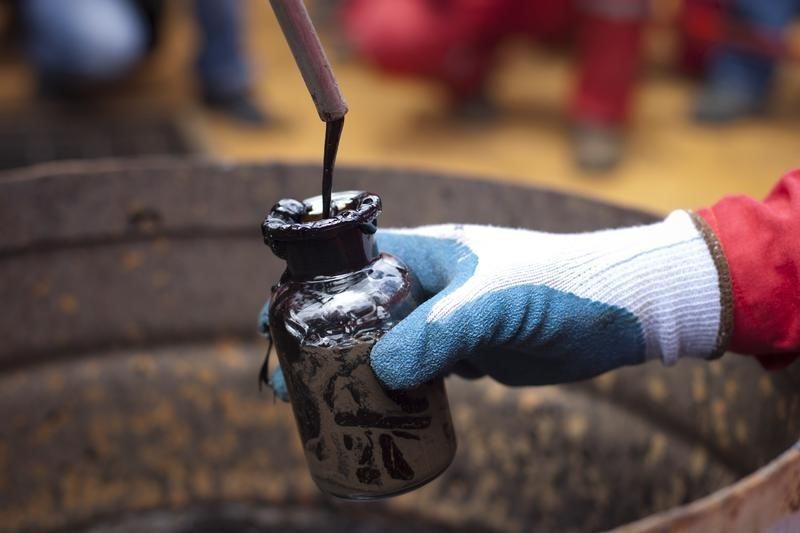By Barani Krishnan
Investing.com -- With no Federal Reserve chatter to prop the dollar and drive crude below last week’s bottom, oil bulls derived strength again from bullish near-term chart signals on Tuesday to send the market higher.
News that Libya's new National Oil Corp chief Farhat Bengdara was facing challenges to his appointment also turned attention toward supplies in one of OPEC’s more important producers, which was trying to reopen shuttered oil fields and ports.
After Monday’s 5% rally — the most in a day since mid-May — recurring fears of a global economic slowdown sent crude prices down almost 3% overnight.
But New York’s West Texas Intermediate crude and London’s Brent found their footing in mid-morning U.S. trade to finish Tuesday’s official session higher.
WTI settled up $1.62, or 1.6%, at $104.22 per barrel, extending Monday’s 5.1% rally. WTI lost almost 7% last week, after plumbing to a Feb. 25 low of $90.58 on Thursday.
Brent settled up $1.08, or 1%, at $107.35 a barrel, also after running up 5.1% in the previous session. The global crude benchmark slid almost 6% last week, after a near five-month low of $95.42 on Thursday.
Markets are experiencing a void in Fed rate hike chatter amid the central bank’s typical blackout period for comments ahead of the July 27 meeting of its policy-making Federal Open Market Committee. That kept the market’s focus on near-term chart signals for crude.
With WTI having taken out its first resistance of $104 this week, its next target was $108, said Sunil Kumar Dixit, chief technical strategist at skcharting.com.
“But we need to stay above $105; otherwise, we risk resuming the downward correction to $94-$92-$90,” said Dixit.
The Dollar Index, pitted against six major currencies, slid for a third day in a row, hovering at under 107 after last week’s two-decade high of 109.14.
An unusually light week for US macroeconomic data has also allowed traders greater discretion on direction, fund flows and trade volumes.
“Traders continue to weigh up tight supplies against recession prospects which have brought the price back to a suddenly more reasonable $100 a barrel,” said Craig Erlam, analyst at online trading platform OANDA.
“We could see (oil) slip further if economic prospects continue to deteriorate, or if Saudi Arabia hints at turning on the taps faster. The former is possible, but the latter still looks unlikely. Traders will be keenly awaiting the next OPEC+ meeting in a couple of weeks.”
Market participants were on the lookout as well for U.S. weekly oil inventory data, due after market settlement from API, or the American Petroleum Institute.
The API will release at approximately 4:30 PM ET (20:30 GMT) a snapshot of closing balances on U.S. crude, gasoline and distillates for the week ended July 15. The numbers serve as a precursor to official inventory data on the same due from the U.S. Energy Information Administration on Wednesday.
For last week, analysts tracked by Investing.com expect the EIA to report a crude stockpile build of 1.357 million barrels, versus the 3.254 -million barrel rise reported during the week to July 8.
On the gasoline inventory front, the consensus is for a build of 71,000 barrels over the 5.825 million-barrel gain in the previous week.
With distillate stockpiles, the expectation is for a climb of 1.169 million barrels versus the prior week’s jump of 2.668 million.
